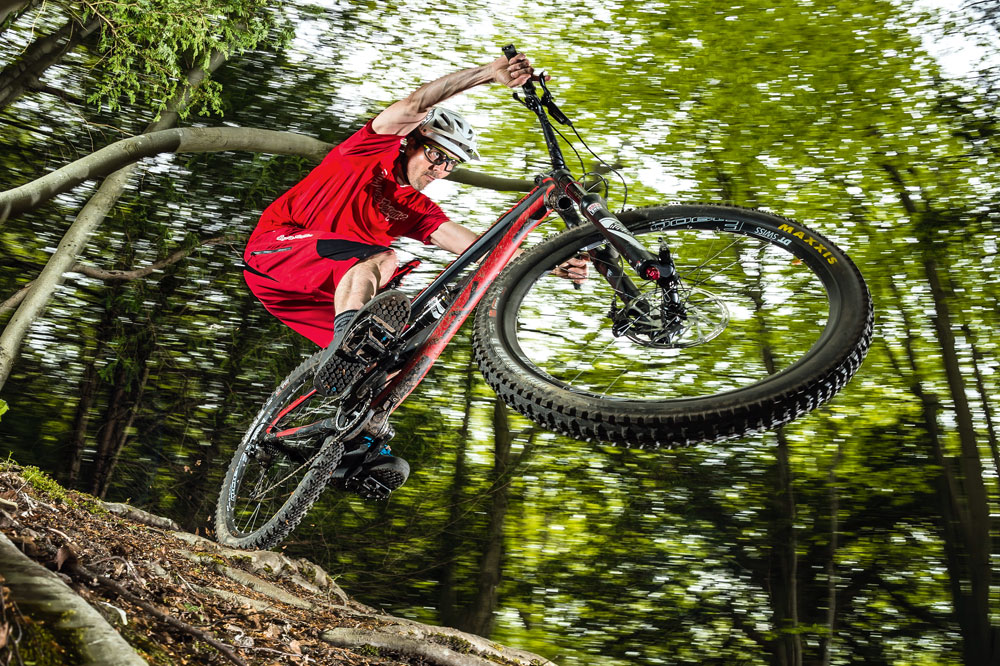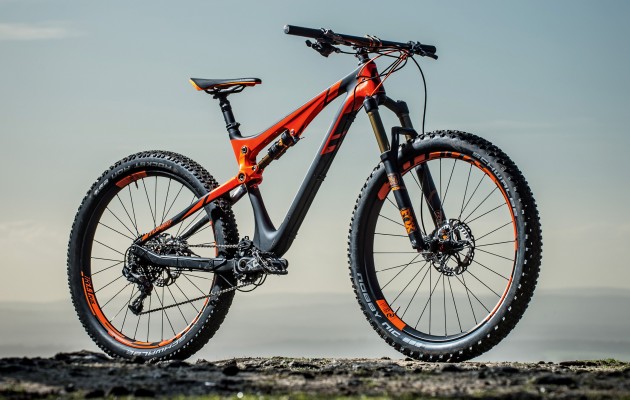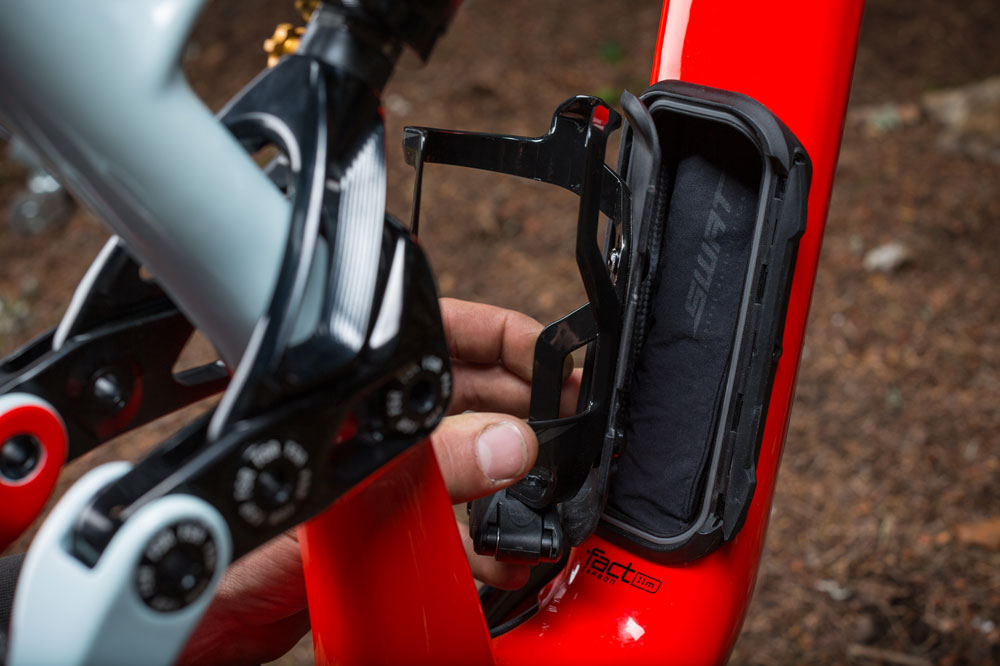Bike of the decade
As we ended the 2010s, the time was right to reflect on a decade of mountain bike development. Here were our favourite mountain bikes of those 10 years-ish.
>>> Editor’s Choice 2019 – home of the best bikes and products on the market

2009 Orange Five Pro
Chosen by Jamie Darlow
“The Five Pro from 2009 was the first full suspension bike I ever rode, a huge step up in performance and price from my old Clockwork that pretty much spoiled me for any other bike that was to follow. mbr was a less formal affair in those days, and old editor Kitch told me not to come into work for my first month of employment, encouraging me to see the best of the UK’s trails. I took off with the Five, exploring Wales, Scotland and the Lake District and got to know the Five.
“Dewy eyed nostalgia aside, that’s not why the Orange Five is my bike of the decade. Really, it could have been almost any Five of the last 10 years because Halifax’s finest has won more bike tests in mbr than any other bike, scoring perfect 10s in many a review. It is consistency personified, evolving slowly and carefully year on year to maintain its position at the top of the trail bike pecking order, while still keeping its iconic design and perfectly balanced descending characteristics.
“There have been some blips along the way, when bikes around the Five outpaced it and became slacker or longer, cheaper or sleeker. But the Halifax brand seems to have a knack for responding to changing times: Lightening, lengthening and slackening the bike, adding 27.5in wheels, adopting new axle and chainstay standards in the nick of time and allowing the bike to stay shining. Just when you thought the Five was out, they pull it back in.”

2013 Mondraker Dune XR
Chosen by Danny Milner
“Mondraker’s hunchback Dune XR was never going to win a beauty pageant, which, much to my own disgust, was one of the main reasons it took some serious arm twisting to get me to actually ride one. But the strongarm tactics of a certain Fabien Barel and his side-kick – the ever-controversial Mr Chris Porter – proved too much to resist. After both of them taking the piss out of my ‘kids’ bike’ all day while shooting a feature at the Forest of Dean in 2012, I finally caved in and slung a leg over the mutant Mondraker.
This was the first year of Forward Geometry, a concept that aimed to increase stability at speed by extending the reach and the wheelbase, yet retain agility by slashing stem lengths. It was a radical development, that added as much as 60mm to the top tube lengths, but kept riders’ hands in the same position by replacing the old 70mm stems with stubby 10mm models.
“The end result looked freaky, but it rode brilliantly, improving confidence and composure in rough and technical terrain to such an extent that it could be ridden with the pace of a downhill bike. Which is hardly surprising since it was longer and slacker than many DH bikes of the time.
“My test ride may have been brief, but it made a lasting impression on me and revealed just how much mountain bike geometry could be improved. And it had an even bigger impact on the market, to the point where pretty much every MTB on sale today has been influenced by Forward Geometry concept to some degree.”

2012 Specialized Stumpjumper FSR Evo 29
Chosen Alan Muldoon
“My first real insight into the benefits of 29in wheels came onboard a Trek Superfly during a trail ride in Whistler. I just couldn’t comprehend how fast and confidently I could attack hardcore terrain on what was essentially a 100mm travel XC race bike. I filed the entire experience as an anomaly before quickly settling back into the familiarity of my 26in wheeled world.
“But the 29er seed was beginning to take root and the introduction of the Specialized Camber 29 really allowed it to flourish. Combining the improved roll over and traction of 29in wheels with more trail focused geometry, the Camber raised more questions than it answered. The key one being, would 29in wheels also benefit longer travel trail bikes? That question seems ridiculous now, as 29in wheels are making successful inroads into World Cup DH racing, but at the time, it was a genuine unknown.
“In fact, I still remember seeing the 29er Stumpjumper Evo for the first time, and it wasn’t love at first sight. My eye trained to analyse the best geometry and proportions of 26in wheel bikes causing me to laugh at how ungainly the Stumpy 29 looked. Specialized UK obviously had a similar response, as the bike wasn’t available here when it first launched.
“Still, I ordered a 29er Stumpy Evo from the US and spend the next six months riding it back to back with the 26in version. I say six months, but within a couple of rides the 26in Stumpy Evo stayed in the back of the van, while the 29er racked up the miles, all in the name of research. And I learned a lot from that bike the key thing being to approach every new bike with an open mind. More importantly, the Stumpjumper FSR Evo 29 went on to win our Trail Bike of the Year test and it singlehandedly converted more trail riders to 29in wheels than any other bike.”
Nearly-the-best of the last 10 years…

Whyte 901
We have something of a soft spot in the UK for hardcore hardtails. And while Whyte isn’t your tradition niche hardtail brand, it is largely responsible for defining modern trail hardtail geometry. Long, low and slack, the Whyte 901 set the benchmark for handling, while opening the door for a raft of other bands to follow suit.

YT Capra
The rise of direct sales brands has been rapid, but the YT Capra deserves a special mention in our bikes of the decade as it really rattled the establishment. With a carbon frame, dialled geometry and a ride quality that matched or exceeded enduro bikes costing twice the price, it was game changing. It helped too that it was drop dead gorgeous.

Plus Tyres
While tyre manufactures were still ironing out the bugs with 2.8in and 3.0in tyres, Scott was racing ahead with Plus bike development, the Scott Genius Plus being one of the first bikes to really take advantage of higher volume tyres. More grip, more comfort, more confidence and shorter stopping distances being the main gains.

SWAT
You think you’ve seen it all then some whizz kid at Specialized goes and cuts a hole in the downtube of a Stumpjumper and sticks a door on it. SWAT Door is born and you can now stuff a pump, tube, snacks or what every you want into your frame rather than carrying it all in a pack on your back. Genius!



